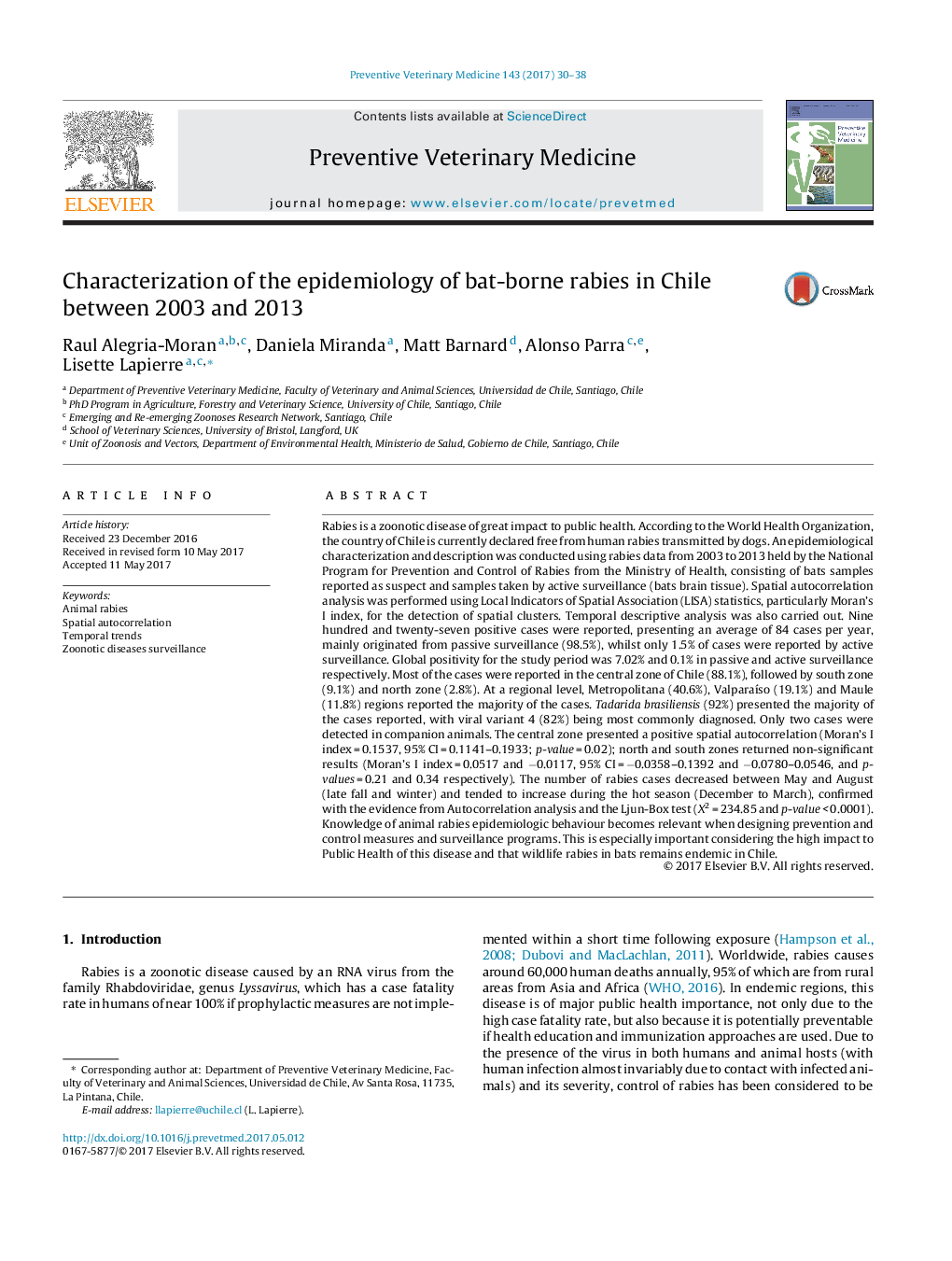| کد مقاله | کد نشریه | سال انتشار | مقاله انگلیسی | نسخه تمام متن |
|---|---|---|---|---|
| 5543470 | 1554147 | 2017 | 9 صفحه PDF | دانلود رایگان |
- Passive surveillance detects the majority of animal rabies cases in Chile.
- Bat is the main reservoir detected in Chile, especially Tadarida brasiliensis.
- Wildlife rabies remains endemic in bats populations in Chile.
- The Central zone of Chile shows significant positive spatial autocorrelation.
- Animal rabies cases tend to decrease during cold season (late fall and winter).
Rabies is a zoonotic disease of great impact to public health. According to the World Health Organization, the country of Chile is currently declared free from human rabies transmitted by dogs. An epidemiological characterization and description was conducted using rabies data from 2003 to 2013 held by the National Program for Prevention and Control of Rabies from the Ministry of Health, consisting of bats samples reported as suspect and samples taken by active surveillance (bats brain tissue). Spatial autocorrelation analysis was performed using Local Indicators of Spatial Association (LISA) statistics, particularly Moran's I index, for the detection of spatial clusters. Temporal descriptive analysis was also carried out. Nine hundred and twenty-seven positive cases were reported, presenting an average of 84 cases per year, mainly originated from passive surveillance (98.5%), whilst only 1.5% of cases were reported by active surveillance. Global positivity for the study period was 7.02% and 0.1% in passive and active surveillance respectively. Most of the cases were reported in the central zone of Chile (88.1%), followed by south zone (9.1%) and north zone (2.8%). At a regional level, Metropolitana (40.6%), ValparaÃso (19.1%) and Maule (11.8%) regions reported the majority of the cases. Tadarida brasiliensis (92%) presented the majority of the cases reported, with viral variant 4 (82%) being most commonly diagnosed. Only two cases were detected in companion animals. The central zone presented a positive spatial autocorrelation (Moran's I index = 0.1537, 95% CI = 0.1141-0.1933; p-value = 0.02); north and south zones returned non-significant results (Moran's I index = 0.0517 and â0.0117, 95% CI = â0.0358-0.1392 and â0.0780-0.0546, and p-values = 0.21 and 0.34 respectively). The number of rabies cases decreased between May and August (late fall and winter) and tended to increase during the hot season (December to March), confirmed with the evidence from Autocorrelation analysis and the Ljun-Box test (X2 = 234.85 and p-value < 0.0001). Knowledge of animal rabies epidemiologic behaviour becomes relevant when designing prevention and control measures and surveillance programs. This is especially important considering the high impact to Public Health of this disease and that wildlife rabies in bats remains endemic in Chile.
Journal: Preventive Veterinary Medicine - Volume 143, 1 August 2017, Pages 30-38
